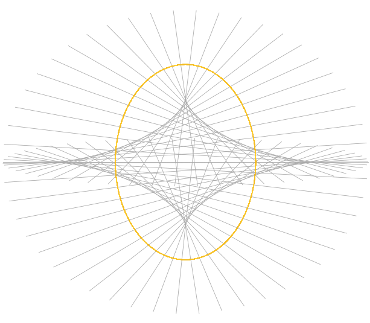8 Perspectives on Deep Inner Work –
The Path for Personal and Professional Growth
The Path for Personal and Professional Growth
Part 7 of 8: Fostering integration through and beyond psychedelic work
November 16, 2022
This is part seven of an eight-part series on deep inner work at Evolute Institute. For the other parts check out:
- Article 1: Increasing our inner freedom
- Article 2: Moving into higher mindsets
- Article 3: From disconnection to re-connection & addressing trauma
- Article 4: Healing Psychological Wounding and the Work of Grief
- Article 5: Overcoming Cultural Conditioning
- Article 6: Increasing Psychological Flexibility
- Article 7: Fostering Integration through and beyond psychedelic work
- Article 8: Acquiring Wisdom for a Good Life
After the ecstasy, the laundry
One key concept in intentional, ceremonial psychedelic work is integration – which means that after having a peak experience, after accessing new spaces during altered states of consciousness, we need to engage in additional work in the days, weeks, months, and even years thereafter.
Hence, in psychedelic work, integration means making sense of the experience, giving meaning to it, and designing and implementing ways to carry the insights and learnings into our daily personal and professional lives. Spiritual teachers like Jack Kornfield have called this the “laundry” after the “ecstasy”[1].
The idea is indeed that the real work starts only after the peak experience. It is not in the protected confines of a Zen monastery, in a cave or during a retreat, but in the very ordinary and common moments in our daily lives where integration must truly happen. In moments when we feel annoyed and stressed that the queue at the supermarket cashier does not move quickly enough, when we feel misunderstood again by our partner, or when we feel again overwhelmed at work. This is the price we have to pay if we want to remain living in a modern society with family, friends and work obligations. And it is also a necessity if we want to be part of shaping our surroundings actively – our neighbourhoods and communities, our companies and organisations and our societies and our planetary conditions.
In short: integration in psychedelic work is the basis for and the essence of building our leadership.
Photo by Rene Böhmer on Unsplash.
Beyond psychedelic work – Integration as a key principle of development
However, today we’d like to take it a step further and extend the meaning of “integration” to the very basis of what it means to grow and develop as a human being.
The great founder of the field of interpersonal neurobiology, Dr. Dan Siegel, has defined the mind as the embodied and relational process that regulates the flow of energy and information – within and between us.[2] As a complex dynamic system, this mind of ours goes through a process of personal development in successive rounds of differentiation and integration, where integration is the linkage of differentiated parts. When the time is right, a developmental impulse (curiosity, pain, yearning…) creates an opening where a new skill/ability is approached, experimented with, practiced, and built up into something that becomes a competence later on.[3]
This process of perceiving more / new things is like learning a foreign language – first it is gibberish and might not interest us much, but then we catch an interest and expose ourselves to the new information and begin to slowly understand more and more by listening. It is not long until we start talking ourselves, practicing the use of words and trying to get confirmation of our utterances from others, and with time we extend our vocabulary and understanding of the rules of the game (grammar) and become increasingly competent. The integration part of this is the work of translating the foreign new words and sentences (utterances, written symbols) back to the meaning-making work of the main system (or mind that knows a mother language). By linking the new meanings to the existing meaning structure, we do the work of integration, so that the whole system becomes a more competent, more complex, multi-lingual system. We have made a step of development (i.e. an increase in complexity and granularity) from knowing and being a competent user of one language to two languages. It is a new meta-competence we have acquired to be able to see objects from two different conceptual / meaning-making perspectives which are encoded in the two different language traditions / cultures.
Photo by Ben Mullins on Unsplash.
The 8 levels of integration for growth and development
What has been illustrated here with the example of learning a second language is a basic principle of the development of “mind” and of human beings in general. In our development as an individual from the earliest stage to maturation (ontogenesis) we repeat phylogenesis – the evolutionary development and differentiation of the whole species. Thus fascinatingly, part of our work is also to re-claim our heritage consciously. We make new experiences (encounter unfamiliar patterns of energy and information) and interact with them in a way that re-creates this pattern within ourselves. We have integrated what once was an external pattern (e.g. how to drive a car, how to write in symbolic language, how to behave at a formal dinner party…) into our system so that it can play a part in the overall functioning of the system (help me get from A to B autonomously with a car, write an article like this one, being a respected and welcome guest at a dinner party which supports my on-going relationality with the hosts and other guests…).
Now, at the psychological or psychospiritual level we can distinguish 8 different integration areas or patterns (courtesy once more to Dr. Dan Siegel):
- Consciousness Integration: Integrating different parts of our psyche and consciousness, e.g. becoming aware of and being able to differentiate between the subjective experience of our awareness and the object of our awareness (see the concept of defusion)
- State Integration: Integrating different inner states and parts (e.g. a conflict between liking to be alone vs liking to be with others, or wanting intimacy and closeness in a stable relationship but also adventure and freedom)
- Memory and Inter-temporal Integration: Integrating our (past) experience as a crucial developmental task by processing and letting go of the painful past, regrets, and resentment and then by integrating our ancestry and humanity’ collective experience (history)[3]
- Vertical Integration: Integrating our body and its sensations into our consciousness – often embodied cognition has been impaired or even cut off by trauma, habits or cultural imprints
- Horizontal Integration: Integrating the modes of attention and capacities of our two brain hemispheres, i.e. the analytical, logical, focused way of attention and the embodied, contextual, big picture sense-making way of being in the world (see our article on cultural conditioning & Iain McGilchrist’s work).
- Interpersonal Integration: Integrating (difficult) relationships, especially those to family, close people and professional relationships (crucial work is we are in leadership positions)
- Narrative integration: Integrating our biography, our self-story of who we are
- Temporal Integration: Integrating the most fundamental and existential issues of life, mainly our mortality and vulnerability and our own inevitable physical death
Photo by Maxime VALCARCE on Unsplash.
Examples of what integration means practically in life & business
If you are curious about how these different areas of integration practically play out, here are a couple of examples of integration people have experienced during our EvoLEAD psychedelic leadership retreat programs:
- One participant with a harsh inner critic, which periodically also turned into a strong external critic, learned to love herself and be more kind, generous and forgiving. These rediscovered inner qualities helped to improve their relationships with others and herself (state integration)
- Another participant felt a great deal of anxiety whenever contemplating a large change in career, let alone becoming self-employed. It felt like the unknown awaiting him was something so threatening that it prevented him from living his life fully. During the EvoLEAD program, he managed to ground himself deeply in the substance of his body, get to know his fear, and embrace and process it. He emerged out of the program much calmer, more centred, and less afraid of uncertainty. (vertical integration)
- One participant processed some deep-seated grief related to the loss of loved ones, a grief that transformed into appreciation, gratitude, a feeling of love and a renewed sense of joy and peace in life (memory integration)
- Another participant grew up to being always the “good boy”, fulfilling parental expectations, excelling at school, having a successful career after completing his Ph.D. from an Ivy League university, and becoming a partner at a major consulting firm early on. Now, in his 60s, he realized his fear of disappointing others has stifled his playfulness and kept him from feeling free and alive his whole life. During EvoLEAD, he learned to let go of the burden of his responsibilities, of the expectations of others, and of the fear to simply be himself. In his own words, he “learned how to fly”, and at the same time experienced profound connectedness and the healing power of touch (consciousness, memory & inter-temporal integration)
- One participant’s desire was to connect with her inner voice and inner wisdom, to stand up for herself and her needs and fully express them, both personally and professionally. During EvoLEAD, she connected to what was truly important to her, moved deeper into the grounding power of her body, and started expressing her feelings and needs more clearly, learning to set boundaries and slowly trust her inner voice (vertical, inter-personal, memory & narrative integration)
- Another participant in our EvoLEAD psychedelic leadership development program suffered from an inner conflict, a tension between two inner parts. On the one hand, one part sees the ecological and climate catastrophe we human beings are creating and feels compelled to take over more responsibility. On the other hand, the second part wants to enjoy life, travel to far-away destinations, live in a spacious house. This conflict between two inner parts, which is also an inter-temporal conflict between the long-term and the short-term, was resolved by cultivating a larger capacity to hold this inner tension. At the same time, we encouraged the participant to foster both a deepening of responsibility (response-ability, the ability to respond) in the world in his role as a CEO / entrepreneur AND a deepening of self-care with the permission to experience pleasure. He could appreciate a new dynamic tension with which to live consciously (state and inter-temporal integration).
- A final example is from a participant who was torn regarding his career choices, struggling between what seems “rational” and corresponds to societal expectations for an outstandingly intelligent high-performer on the one hand, and what his heart truly desires, what brings fulfillment and joy, on the other hand. In addition, he faced a sense of disconnectedness (or “lack of home”), which also expressed itself in his romantic relationship. His work during the EvoLEAD program helped him to integrate his head, his heart and his body much more, allowing him to see beyond the “rat race” and internalized social expectations. He could eventually find a home in his body and thus in the world – a safe place from which he could enter into relationship and connection in a new way (vertical, horizontal and interpersonal integration).

Photo by Lucas Kapla on Unsplash.
Allow the present to live in your core, and the present will open your heart to yourself.
Transpirational integration – moving towards a breathing self
A final, 9th integration movement has been called “transpirational integration” by Dr. Dan Siegel and refers to the integration across all of the eight other integration domains. It is when your mind / consciousness moves fluidly or “breathes” across states, modalities, time, memory patterns, information and energy processing centers, internalized relationships and self-stories. It means bringing (“breathing”) space into the overall system, which dissolves the strict boundaries between self, others and the world. We perceive ourselves more and more as a nexus of relations, interconnected, and no longer as an individual subject facing an external world made of objects (and other subjects). In this final integration pattern, integration moves towards what some ancient wisdom traditions (Buddhism, Taoism…) have called the state of interconnectedness, oneness or non-duality. Maybe we can think of this state as the pinnacle of this process of transpirational integration.
Transpirational integration is the movement into full presence, into a sense of true freedom and choice, a movement to co-creating our reality moment-to-moment from relation to the world.
What’s more, there is a beautiful resonance or consilience between Dan Siegel’s work and Thomas Hübl’s descriptions of a “movement” that needs or wants to complete itself.[4] The integration domains are thus also domains where movement can happen, where fixed patterns becomes fluid again and where isolated, disconnected parts of the bodymind become connected for the first time or re-connected where they were disconnected by trauma, wounding or habituation (see also for example article 3 of this series on deep inner work: From disconnection to re-connection & addressing trauma).
Ok, that’s it for now – in the next article, we conclude our 8-part series on deep inner work with a final part on acquiring wisdom:
- Article 8: Acquiring Wisdom for a Good Life
If you liked what you read and haven’t done so already: check out the previous articles of this series:
- Article 1: Deep inner work: How to increase inner freedom
- Article 2: Deep inner work: Moving into higher mindsets
- Article 3: From disconnection to re-connection & addressing trauma
- Article 4: Healing Psychological Wounding and the Work of Grief
- Article 5: Overcoming Cultural Conditioning
- Article 6: Increasing Psychological Flexibility
Interested in joining a group of pioneering entrepreneurs, organisational leaders & decision-makers, change-makers and curious minds on their path of inner growth and development? Curious about the power of altered states of consciousness and the use of psychedelic truffles in a safe and legal setting? Then check out one of our psychedelic retreat programs with legal psychoactive “magic truffles” or schedule an exploratory call. We’re looking forward to determining with you if our programs could be a good fit for you at this point of your journey.
Please bear in mind that we do not provide medical advise and you should always seek assistance from a medical professional before making any decision about consuming psychedelics.
Dmitrij Achelrod PhD
Contributing Author
Christopher Kabakis
Dmitrij Achelrod PhD
Contributing Author
Christopher Kabakis
Subscribe to the insights newsletter
At most, once every 2 weeks.


Images
Article Cover: Photo by Daniele Levis Pelusi on Unsplash
References:
[1] Kornfield, Jack (2001): After the Ecstasy, the Laundry: How the Heart Grows Wise on the Spiritual Path. Bantam; Reprint Edition.
[2] See for example: Siegel, Dan (2010): Mindsight: The New Science of Personal Transformation. Bantam; Reprint Edition, or Siegel, Dan (2016): Mind: A Journey to the Heart of Being Human. WW Norton & Co; Illustrated edition.
[3] Spiritual teacher Thomas Hübl echoes similar thoughts in his work on healing individual, ancestral & collective trauma.
[4] Cf. https://thomashuebl.com/.



